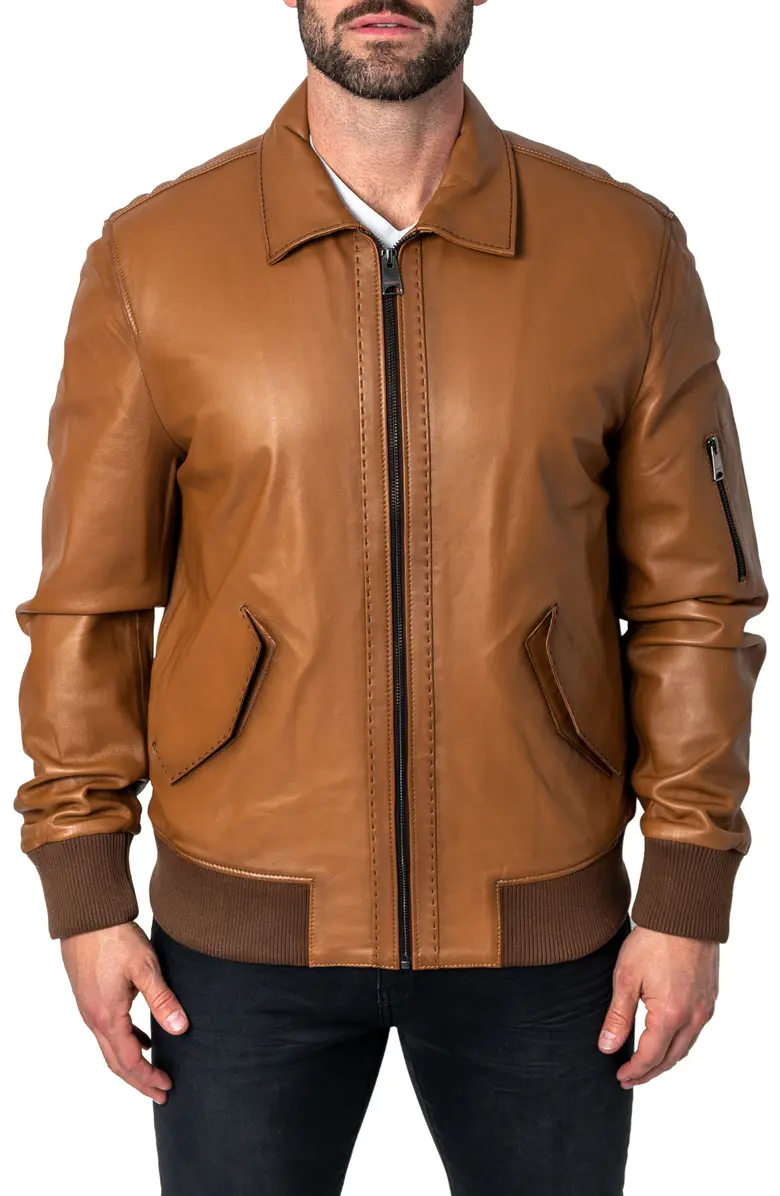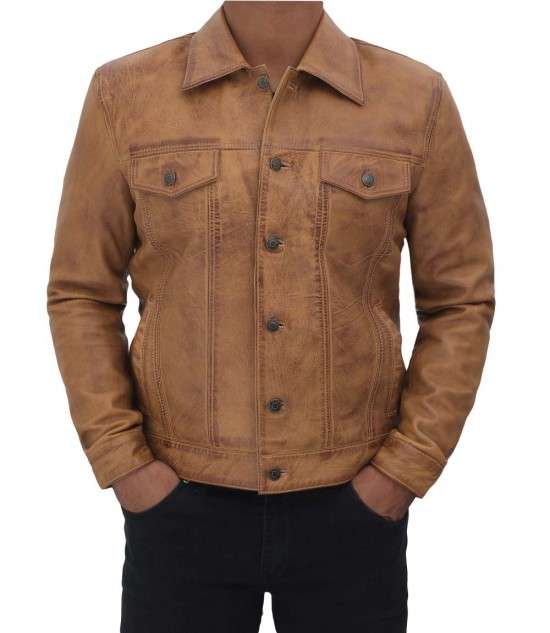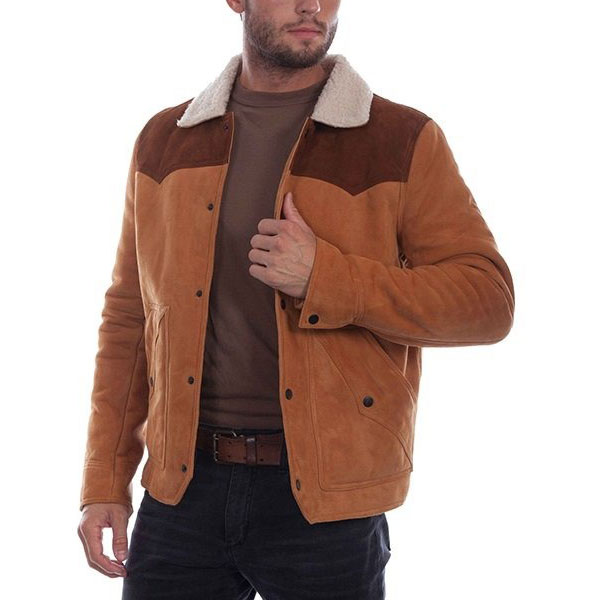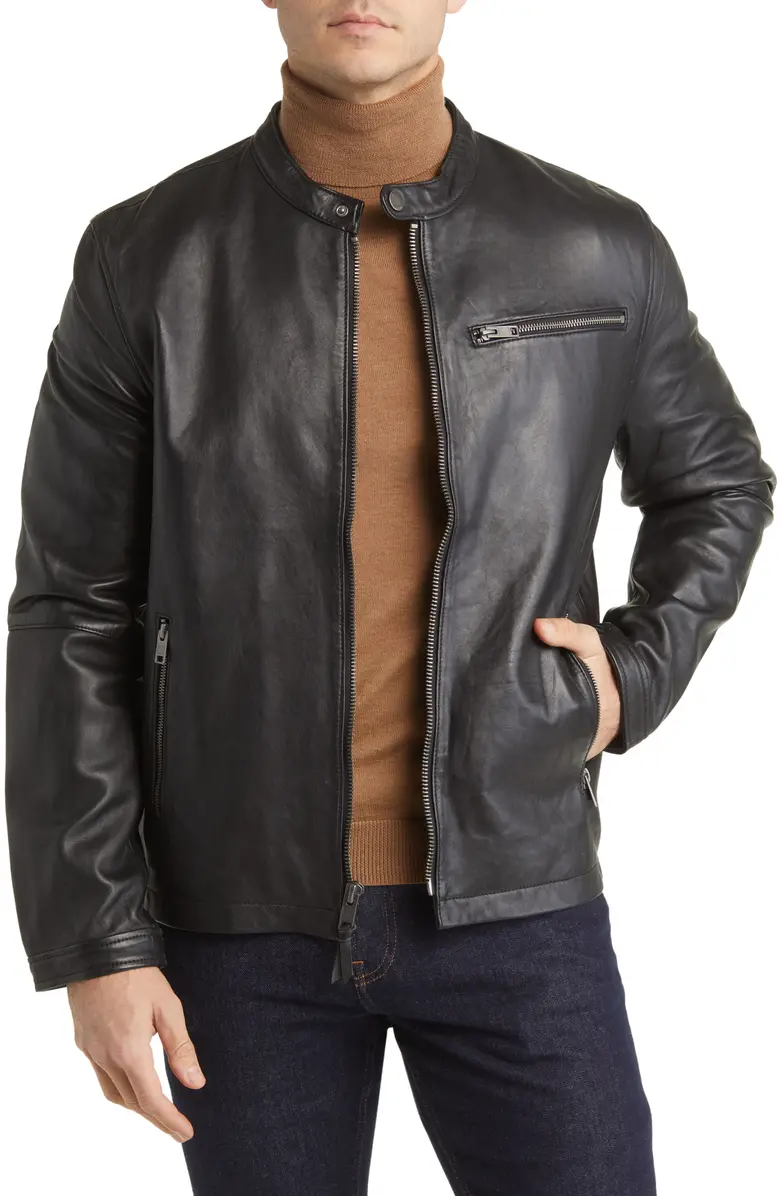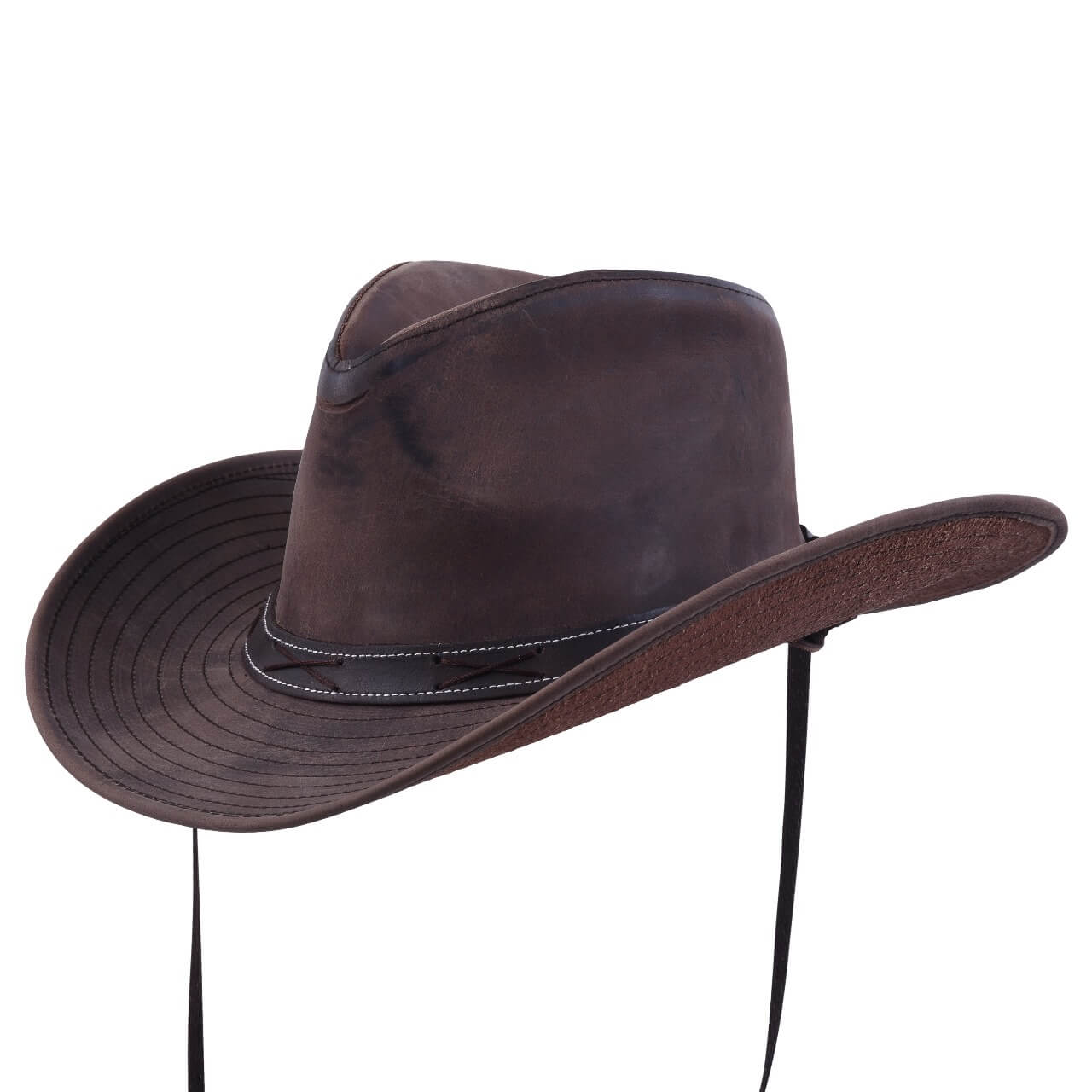From furniture and vehicle interiors to jackets and accessories, leather is a classic material known for its durability and aesthetic appeal. The usage of leather can be found in a great range of goods. Still, every leather is unique. To give it a number of textures and to improve its characteristics various treatments and finishing techniques are applied to leather produce varying looks. Ordinary and distressed leather stand out the most among the several varieties on the market for their special features. We shall explore the origins, looks, uses, and care requirements of distressed and standard leather in great detail in this page.
What is Regular Leather?
Regular leather also known as full-grain or top-grade leather depending on its quality is leather that has been prepared free of any artificial wear or distressing. This kind of leather looks simple and attractive since it shows natural grain and marks, thereby preserving its original surface.
Characteristics of regular leather
- The natural grain of the hide is usually obvious in regular leather in the form of pores giving it a unique texture. While top-grade leather may have a somewhat polished surface, high-quality normal leather—including full-grain leather—emphasizes this inherent beauty.
- Regular leather has a polished and smooth appearance unlike that of distressed leather. The finished good usually determines if it has a minor sheen or gloss.
- Standard leather frequently has an even color tone. It offers a consistent look since it can be dyed in several tones from traditional black and browns to more modern hues.
- Regular leather is well-known for its resistance to wear over time and general strength. It acquires a subtle sheen, a patina, which gives character and depth with correct care.
Use of Regular Leather
Luxury goods such handbags, wallets, belts, coats, and furniture all feature regular leather extensively. Its luxury look and flawless finish make it perfect for upholstery, high-end apparel, and products that a refined look is sought for.
What is Distressed Leather?
Distressed leather is normal leather that has been purposefully aged, worn, and ruggedly treated to seem. Each item has a distinctive, rustic appearance since techniques that replicate the natural wear patterns that would otherwise take years to acquire help to reach this finish.
Features of Aging Distressed Leather
- Made to seem faded and aged, distressed leather lends a vintage appeal. Variations in tone, wrinkles, and subtle creases on the surface could all help to create this impact.
- The distressed technique results in this kind of leather feeling softer and more flexible. Fibers’ breaking down makes this material more flexible than standard leather.
- Original Patterns: There is no two piece of damaged leather that appear exactly same. Its unique look that cannot be duplicated with synthetic fabrics comes from the patterns of upsetting and color variation.
- Easy Maintenance: Distressed leather’s already “worn” look helps it to gracefully withstand daily scuffs and scratches than standard leather. Little imperfections fit the texture and provide character rather than taking away from its look.
Use of Distressed Leather
Products where a tough, laid-back look is intended call for distressed leather. Distressed leather is typically used to create leather coats, boots, belts, furniture, and purses in order to get an antique, edgy impression. Interior designs aiming at an industrial or rustic look also like this leather.
Main Variations Between Regular and Distressed Leather
1. Look-through
- Regular Leather has an even, smooth surface with consistent coloring. With a smooth finish that over time develops a patina, it seems polished, sophisticated, and new.
- Distressed leather looks old and weathered right from the start. Its surface is typically purposefully roughed up with natural-looking blemishes and folds to evoke a tough and vintage feel.
2. Texture and Sensibility
- Regular Leather: Minimal processing results in smoother, perhaps slightly stiff feeling. Grade of normal leather might affect its texture.
- Distressed leather has textured, softer, more flexible feel. Leather fibers break during the distressing process, which provides it more flexible touch.
3. Repairing
- Regular conditioning and care help to prevent stains, drying, and cracking of Leather. Treating scuffs and scratches properly helps to preserve their shiny look.
- Distressed Leather: More easily maintained since scuffs and scratches accentuate its character. Distressed leather just needs little upkeep and sporadic conditioning.
4. Cost
- This leather is usually more costly particularly in its premium varieties like full-grain leather. This results from the particular requirements and labor-intensive procedures.
- Distressed leather can naturally conceal minor flaws and can be cheaper than premium normal leather. However, some high-end distressed leather goods might be expensive depending on particular treatments.
5. Longevity and Durability
- Regular Leather: Particularly full-grain leather, which, with proper care can last a lifetime, is well-known for its durability.
- Restressed Leather: Because the distressing process breaks down fibers, distressed leather could not have the same lifetime as full-grain leather even if it is sturdy. Still, it provides excellent longevity, particularly for daily, casual products.
How is Distressed Leather Made?
Distressed leather achieves its old look by means of special procedures combining several techniques. These are few typical techniques:
- The leather surface is roughened with sandpaper or another abrasive tool, therefore producing a weathered appearance.
- Chemical Treatments: Some compounds can be used to accelerate the aging process, therefore producing darker tones and variances in color.
- Controlled heat and moisture treatments help to produce natural wrinkles and creases, therefore contributing to the soft and flexible feel of distressed leather.
- Although the intended outcome will affect these procedures, each one highlights the tough, timeworn beauty of the leather.
Benefits of Distressed Leather Comparatively to Standard Leather
- Simple Maintenance: For those who desire a “low maintenance” leather product, distressed leather’s aged look means minor scuffs and scratches don’t stick out.
- With no “break-in” period needed, distressed leather’s soft and broken-in feel might be more comfortable to wear or use straight away.
- Every piece of distressed leather has a different look since the different degrees of distressing define it.
Benefits of Natural Leather Compared to Regular Leather
- Lower Durability: Distressed leather may be somewhat less durable than premium standard leather including full-grain leather, depending on the disintegration of the fibers.
- Limited Formal Appeal: Not every environment would be appropriate for the casual, tough appearance of distressed leather. Conversely, regular leather offers a more adaptable look that would match formal and informal settings.
Maintaining Regular Leather’s Distressed Condition
Regular Leather Care
Regular conditioning and cleaning are essential if one wants to prolong the lifetime of ordinary leather. Every three to six months, apply a leather conditioner to preserve moisture—especially for full-grain leather, which dries out easily.
Taking Care of Distressed Leather
Generally speaking, distressed leather is easier to maintain and forgiving. To avoid too much drying and cracking, it is still advisable to condition it sometimes, nevertheless. Distressed leather gains from light handling instead of thorough upkeep unlike ordinary leather.
Finally
When you are out shopping for leather your taste, necessity, and budget will determine whether you go for standard or distressed leather. Regular leather is not only appropriate for both official and informal use it presents a classic, sophisticated look. Apart from that it is also durable, and adaptable. However, for consumers looking for an antique vibe distressed leather offers a distinctive, tough look with little upkeep. Both kinds of leather have different advantages, thus they are flexible decisions for any kind of decorating or wardrobe.
FAQ’s
1. What is the main difference between distressed leather and regular leather?
- Distressed leather is treated to look aged and worn, giving it a vintage, rugged appearance, while regular leather maintains its natural grain and appears smoother and more polished.
2. Is distressed leather real leather?
- Yes, distressed leather is genuine leather that has undergone specific treatments to give it an intentionally aged look. The distressing process can be applied to various types of leather, including full-grain and top-grain.
3. Which is more durable, distressed leather or regular leather?
- Regular leather, especially full grain, is generally more durable because it has not been altered as much. Distressed leather may have slightly less durability due to the fiber breakdown that occurs during the distressing process.
4. Is distressed leather easy to maintain?
- Yes, distressed leather is relatively easy to maintain because minor scratches and scuffs blend into its texture, adding to its character. Occasional conditioning is recommended to keep it from drying out.
5. Can I use distressed leather in formal settings?
- Distressed leather has a casual, rugged look that may not be ideal for formal settings. Regular leather is typically more versatile and can be used in both formal and casual environments.
6. Does distressed leather last as long as regular leather?
- With proper care, distressed leather can last a long time, but high-quality regular leather like full grain may have a longer lifespan due to its durability and resistance to wear.
7. How do I clean distressed leather?
- Clean distressed leather with a soft cloth and mild leather cleaner. Avoid harsh chemicals, and condition it occasionally to maintain its softness and flexibility.
8. Is distressed leather more affordable than regular leather?
- Distressed leather can sometimes be more affordable, especially if minor imperfections are hidden by the distressing process. However, high-end distressed leather items can also be costly, depending on the brand and craftsmanship.
9. Does regular leather require more maintenance than distressed leather?
- Yes. Regular leather usually requires more upkeep to maintain its polished look, including regular conditioning, cleaning, and protection from scratches. Distressed leather is more forgiving since scuffs and marks add to its rugged look.
10. Which type of leather is more comfortable to wear?
- Distressed leather is often softer and more flexible, providing a “broken-in” feel that makes it comfortable to wear immediately. Regular leather can take time to soften, especially if it’s full-grain leather.




